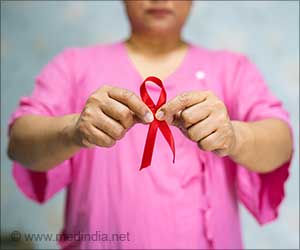MRI breast imaging technique does not require any contrast agents like gadolinium or sophisticated data to differentiate between benign and malignant tumor.

‘MRI imaging technique reduces the number of breast biopsies and use of contrast agents that are injected intravenously.
’





Researchers recently studied an alternative approach that eliminates the need for contrast agents in some cases by using diffusion-weighted imaging (DWI) measurements derived from MRI. The technique, known as diffusion kurtosis imaging, provides a picture of breast tissue on a microstructural level."Diffusion kurtosis imaging has been introduced in DWI to provide important information on tissue structures at a microscopic level," said study lead author Sebastian Bickelhaupt, M.D., from the German Cancer Research Center in Heidelberg, Germany. "Since malignant lesions disrupt the tissue structures at this level, diffusion kurtosis might serve as a relevant marker of changes."
Dr. Bickelhaupt, co-lead author Paul Jaeger, M.Sc., and colleagues evaluated a retrospective analysis of data collected from 222 women at two independent study sites. The women had suspicious findings on mammography that were classified under the Breast Imaging Reporting and Data System (BI-RADS) as BI-RADS 4 and 5 breast lesions. A BI-RADS 4 lesion is considered a suspicious abnormality, while a 5 is considered highly suspicious of malignancy. The women underwent DWI followed by biopsy.
For the analysis, a software algorithm was developed for lesion characterization, and imaging features were extracted using a kurtosis-based radiomics model. Radiomics is a rapidly growing field that enables the extraction of a large amount of quantifiable data from images.
In an independent test set of 127 women, the radiomics analysis reduced false-positive findings by 70 percent, while detecting 60 of 61 malignant lesions, or 98 percent.
Advertisement
Should the results hold in larger trials, the model has potential advantages in the clinic beyond its ability to reduce unnecessary biopsies in women with BI-RADS 4 lesions. The software algorithm makes the assessment reader-independent, ensuring that its accuracy is maintained across different imaging facilities.
"This might also improve the efficiency of reporting," he said.
Source-Eurekalert














